For more information on this topic, read about Goodyear Tire’s Dynamometer Test recommendations and Bridgestone-Firestone’s Technical Bulletin. Also see major sources of rear wheel horsepower losses as well as tire slippage – and consider using larger rolls with machined-in deep traction grooves.
Are your tires getting overly depressed and stressed? No, not the kind of depression a psychologist might help with. We’re asking if you might be excessively deforming your tires, during chassis dyno pulls. A look at the accompanying (above right) illustration shows what we mean.
Tires are engineered to run on the nearly-flat earth. At over 500-million inches in diameter, the earth’s radius dwarfs that of any chassis dynamometer roll. Running a tire on a roll decreases the contact patch (traction) area while simultaneously deforming the tires shape. Worse still, the location of this this added deformation works its way around the entire tire with each revolution. That continuous flexing and un-flexing cycle generates heat (energy) within the tire which means it is absorbing power from the engine. This is power that will never be delivered into the dyno for measurement. (Click for typical chassis dynamometer power limits.)
Fortunately, there is some good news. As the dynamometer’s roll diameter grows to match (or exceed) the tire’s own, the degree of deformation falls quickly. So, rolls over five-feet in diameter are rarely warranted. The series of 3D FEA modeling analysis screen captures (below) help illustrate the relative deformation for a typical automotive performance tire against a range of increasing roll diameters.
| 3D FEA of Tire Deformation vs. Roll Diameter | Analysis Comments |
 | Flat-earth slab (as a baseline) with a 24″ tire shows that less than 1″ of deflection occurs in attaining its 5″ long traction contact patch. This baseline and the analysis below were generated with 1,000 foot-pounds of forward-direction axle torque. Note the “V-shaped” divider scribe lines (on the slab’s face) marking this 5″ long contact patch zone – then compare this to the equivalent 5″ long contact patch (“V” scribe lines) on each of the roll faces below. |
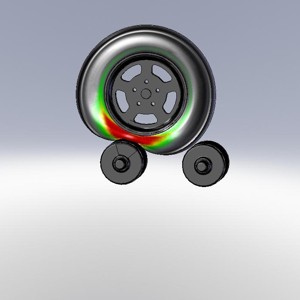 | 8½”-diameter unlinked tandem rolls with a 24″ tire requires over 3¾” of vertical “strap down” (tire indentation and deformation) travel to wrap around the equivalent (flat-earth) 5″ long contact patch – which must all be on the forward (working) roll! Notice the extreme-stress hotspots (in red). The high strap-down forces required to transfer any serious power are terrible for tire life. Even then traction is poor, and much of the full-power transfer goes away as tire damaging heat energy. The lost power, measured in BTU, KW, or Hp units, is not free – this is power that will never make it from the engine to the rollers (or pavement)! Note: If tandem-rolls are not linked (front-to-back) the rear set of rolls offer no load sharing capability. Therefore it is counterproductive to use rear biased strap force to restraint the tires against the back rolls, doing so only serves to deform the tire – without contributing to power transfer. This is worse than no rear roll at all! This class of roller assembly was originally designed for checking speedometers and certifying taxi odometers (at zero load). |
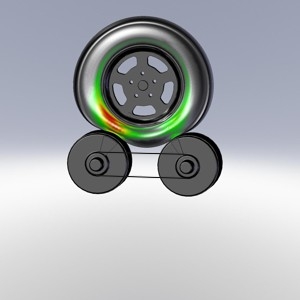 | 12″ to 13″-diameter linked tandem rolls with a 24″ tire requires about 2¾” of vertical “strap down” (tire indentation and deformation) travel to wrap around the equivalent (flat-earth) 5″ long contact patch – with roughly 70% on forward roll! Notice the high-stress hotspots (in red). We consider a pair of linked 12″-diameter tandem rolls the smallest set that can be used for seriously testing even moderate performance vehicles (under full power). Note: With linked tandem-rolls (and carful strapping to resist most forward travel), about one-third of the traction duty can be shared with the back roll set. Properly strapped, a tandem set of 12″ rolls about matches the traction available from a single 16″ roll. |
 | 16″-diameter roll with a 24″ tire requires about 2½” of vertical “strap down” (tire indentation and deformation) travel to wrap around the equivalent (flat-earth) 5″ long contact patch! This is better than the a single 12″ roll diameter for tire life traction and full-power transfer, and about equal to a pair of linked 12″ tandem rolls. |
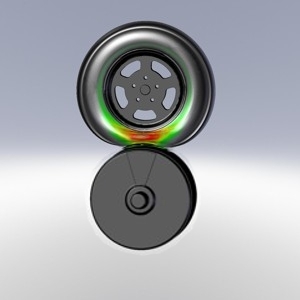 | 20″-diameter roll with a 24″ tire requires about 2¼”” of vertical “strap down” (tire indentation and deformation) travel to wrap around the equivalent (flat-earth) 5″ long contact patch! This is better than the a single 16″ roll diameter for tire life traction and full-power transfer, and about equal to a pair of linked 13″ tandem rolls. |
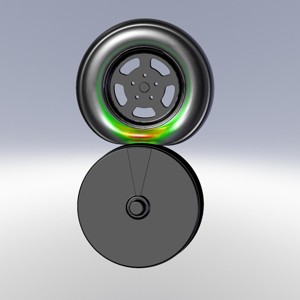 | 24″-diameter roll with a 24″ tire requires about 2″ of vertical “strap down” (tire indentation and deformation) travel to wrap around the equivalent (flat-earth) 5″ long contact patch! This is much better than the above roll diameters for tire life. And, traction and full-power transfer pretty much match what is available on highway pavement. |
 | 30″-diameter roll with a 24″ tire requires about 1½” of vertical “strap down” (tire indentation and deformation) travel to wrap around the equivalent (flat-earth) 5″ long contact patch! This is measurably better than the above 24″ roll diameter for tire life. In fact, with the addition of our machined in traction grooves, traction and full-power transfer exceed what is available on highway pavement. |
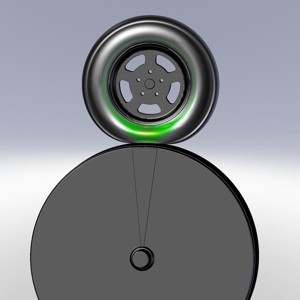 | 36″-diameter roll with a 24″ tire requires about 1¼” of vertical “strap down” (tire indentation and deformation) travel to wrap around the equivalent (flat-earth) 5″ long contact patch! This is measurably better than the above 24″ roll diameter for tire life. In fact, with the addition of our machined in traction grooves, traction and full-power transfer exceed what is available on highway pavement. |
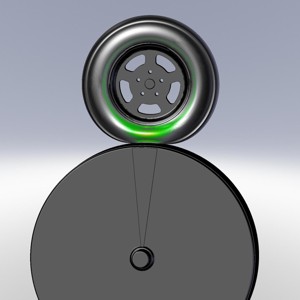 | 44″-diameter roll with a 24″ tire requires under 1¼” of vertical “strap down” (tire indentation and deformation) travel to wrap around the equivalent (flat-earth) 5″ long contact patch! This is almost as good, for tire life, as running on a stretch of smooth and level concrete. In fact, with the addition of our machined in traction grooves, traction and full-power transfer easily exceed what is available on highway pavement and begin to match what is available from a well prepped drag-strip starting line. |
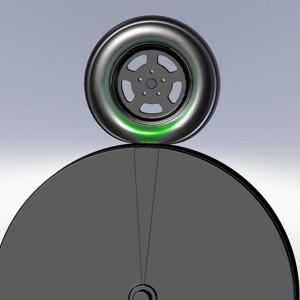 | 60″-diameter roll with a 24″ tire requires just 1″ of vertical “strap down” (tire indentation and deformation) travel to wrap around the equivalent (flat-earth) 5″ long contact patch! This is essentially equal, for tire life, to running on a stretch of smooth and level concrete. And, with the addition of our machined in traction grooves, traction and full-power transfer exceed what is available from a well prepped drag-strip starting line. |
